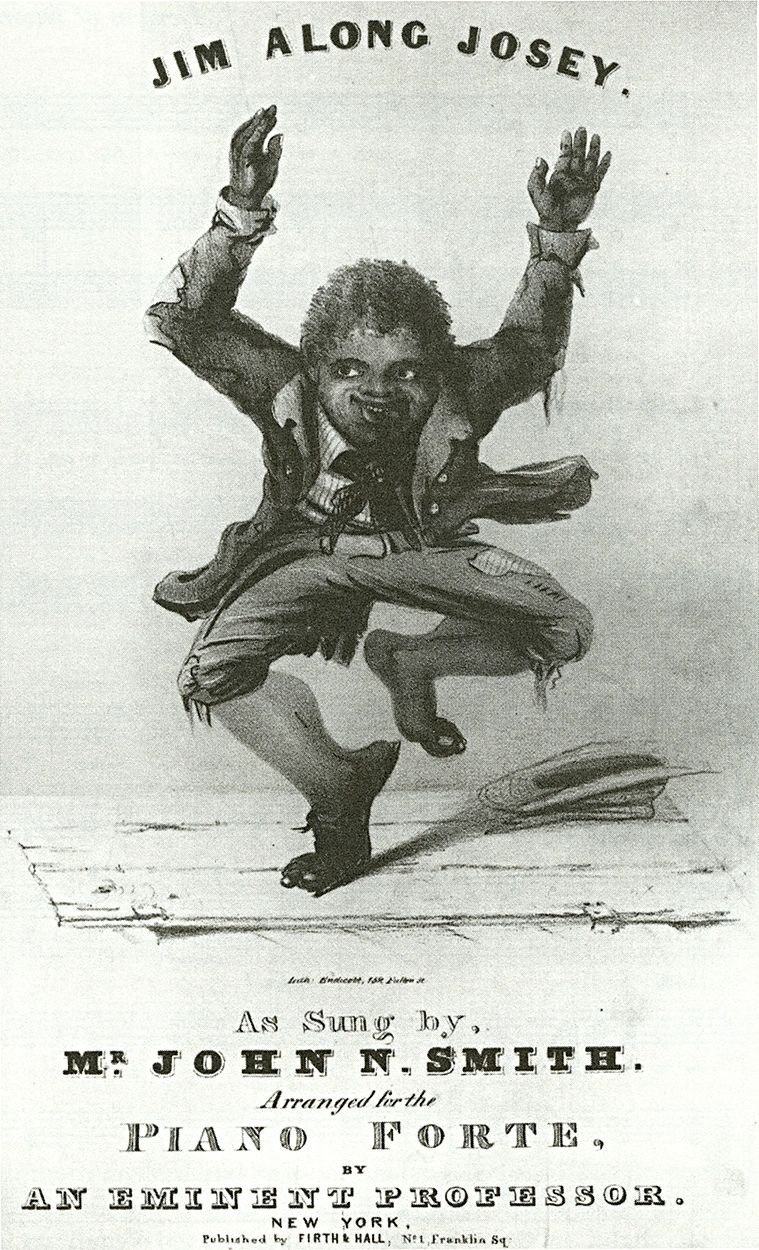JIM ALONG JOSIE
May 29, 2019
by Brandi Waller-Pace
"Jim Along Josey" was written by blackface minstrel performer Edward Harper in 1838. Blackface minstrelsy was America's first popular form of entertainment- one that found humor in portraying black people as lazy, irresponsible, dumb, unattractive, slovenly, and deserving of mockery.
As was ubiquitous in blackface minstrel songs, the text contains racial slurs and is written in a stereotypical vernacular mimicking what was perceived to be African American speech.
Here are some of the song's original lyrics:
"I’se from Lucianna as you all know, Dar where Jim along Josey’s all de go, Dem niggars all rise when de bell does ring, And dis is de song da dey do sing. Hey get along, get along Josey, hey get along, get along Jo!"
In Maya Brown's article "'Jim Along Josey': Play-Parties and the Survival of a Blackface Minstrel Song," she uses the song piece to illustrate how play-party participants in late 1800s rural America "adapted the lyrics and instrumentation of blackface minstrel songs to create a vocal music to accompany their play-party games." Through versions of the song collected in different parts of the country, Brown presents variations that developed through the course of oral transmission:
"Hey, come a get along, Get along, Josie. Hey, come a get along. Get along Jo. If I was single and wanted a beau, I’d fly to the arms of Jim along Jo."
Another variation in which we see a more familiar refrain:
"Cat’s in the cream jar, Run, girls, run! Fire in the mountains, Fun, boys, fun! Hey, Jim along, Jim along Josie! Hey, Jim along, Jim Along, Jo."
Blackface minstrelsy had its heyday from the 1840s to the 1870s. Songs from blackface minstrel shows and demeaning, dehumanizing stereotypes of African Americans created during that time became deeply ingrained in American society. It wasn't until after the 1930s that performances began to decline. The music created for the blackface minstrel stage lives on in many of our music resources, and the mocking stereotypes of African Americans and treatment of black skin and features as costumes lives on in our society.
Harper, E. and Smith, John N. "Jim Along Josey" (1840). Historic Sheet Music Collection. 775. Retreived from https://digitalcommons.conncoll.edu/cgi/viewcontent.cgi?article=1774&context=sheetmusic
Smithsonian National Museum of African American History and Culture. (n.d.). Blackface: The Birth of An American Stereotype. Retreived from https://nmaahc.si.edu/blog-post/blackface-birth-american-stereotype
Brown, M. (2017) "Jim Along Josey": Play-Parties and the Survival of a Blackface Minstrel Song. Excellence in Performing Arts Research, Volume 4. Retrieved from https://digitalcommons.kent.edu/cgi/viewcontent.cgi?article=1027&context=epar
Clark, A. (2019). How the History of Blackface Is Rooted in Racism. Retrieved from https://www.history.com/news/blackface-history-racism-origins
